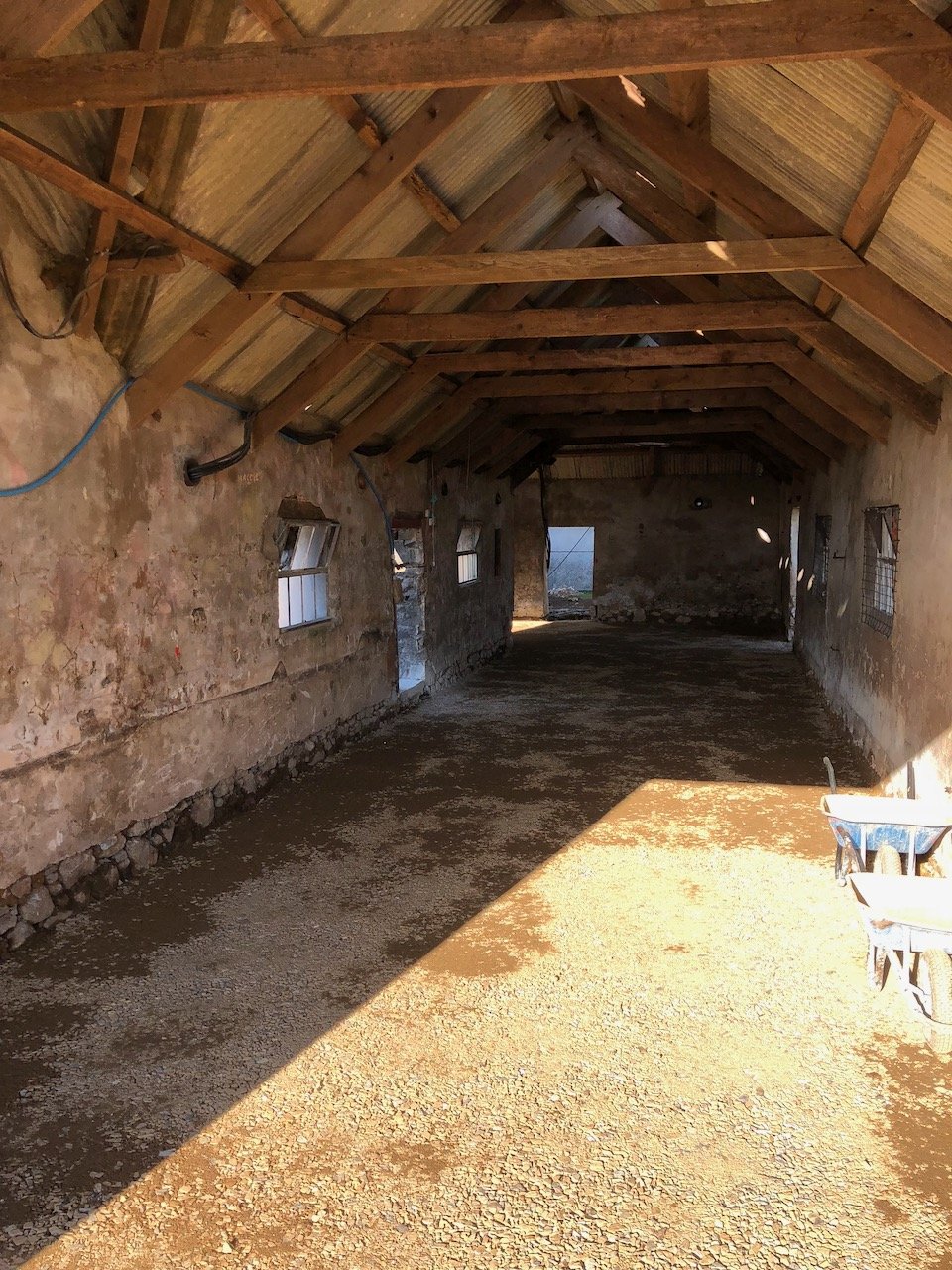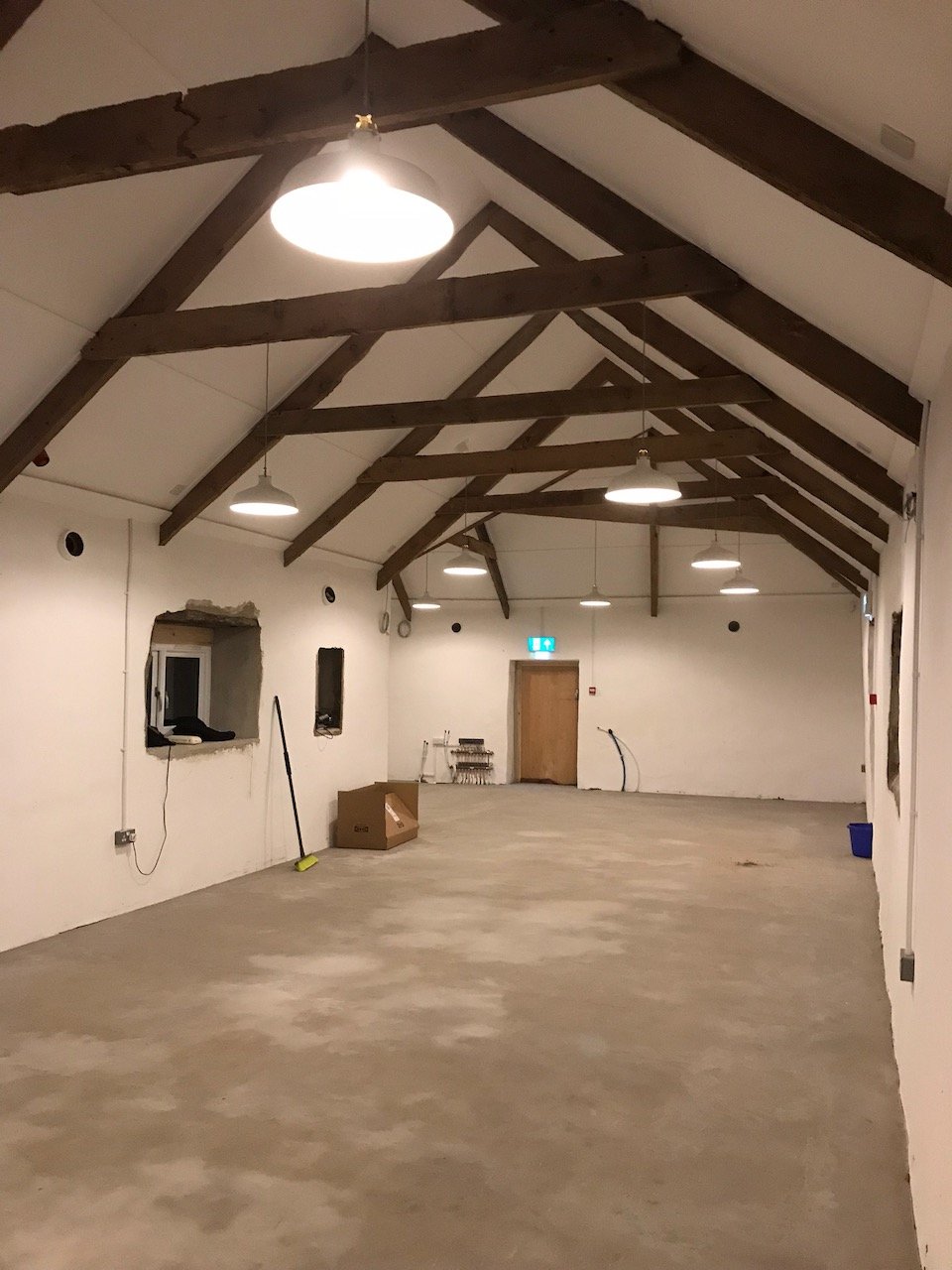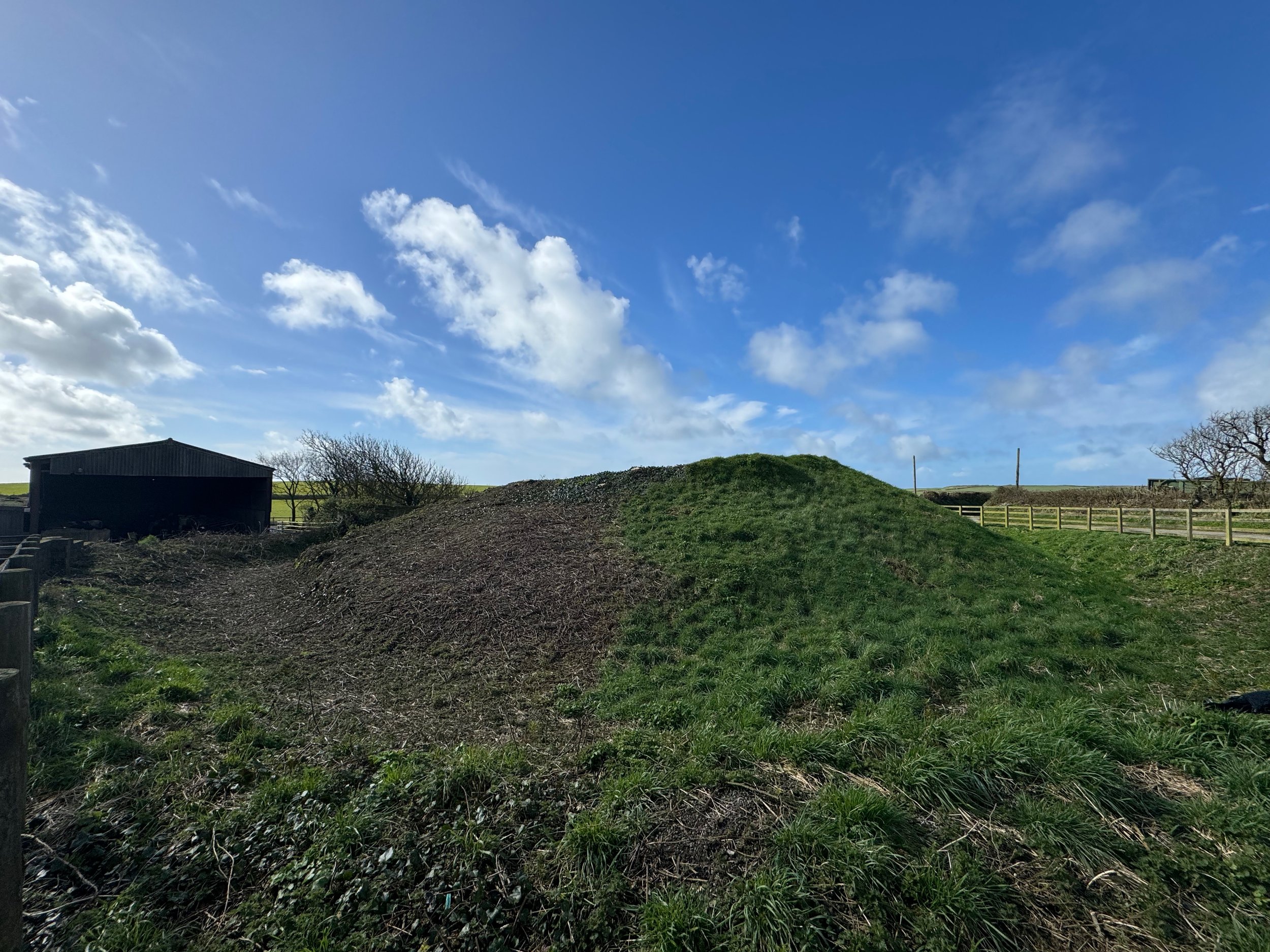History of Pointz Castle
After the Norman Invasion of Pembrokeshire, which began in 1193, many Norman, Flemish, and Saxon settlers took over much of South and Mid Pembrokeshire. They set up a military boundary to protect their territory from the Welsh-speaking communities in the north..
The farm and village names of:
Points Castle (from Ponccii - a French settler)
Rickeston (from Ricard - French)
Tancredston (from Tancred – Flemish)
Walterston (from Walter – French or Flemish)
Jordanston (Jourdon – French)
Letterston (Lettert – Flemish)
Puncheston (Ponchardon – Norman French)
Morfil (Morville – French) formed a barrier in the north of the county.
Pointz Castle had its own Motte and Bailey near the field name Parc y Castell
The area between Pointz Castle and Solva was closely linked to the Bishop of St. Davids from early on. The land around Pointz Castle belonged to the Bishop from the early medieval period all the way up to the 20th century.
Recorded as Castrum Ponci in the Black Book St. Davids 1326. as: 4 caracutes (arable land) each 80 acres = 320 acres.
Holding for the Bishop 24 cattle, 7 horses, 500 sheep. 5 tenants , also cottages, total area 1 caracute and ½ a bovate.
In addition, there were various services to the Bishop: ploughing ,harrowing, hay harvest, carrying corn, attendance at the mill, carrying millstones, repairing walls, sluices and dam. Also following St David`s relics to Glanturne (boundary of Pebidiog (Dewisland) with Cemaes and Rhoose).
Further occupiers are recorded in 16th centuries:
Walter Wythyn, husbandman at Pointz Castle 1545-46
William Martin, living at Pointz Castle 1584-88
John ap Rhys, of Rickeston tenant 1582
From the 16th to the late 18th century, the Rhys family of Rickeston—located just north of Pointz Castle—occupied the Pointz Castle farm.
In 1784, Samuel Griffith (1753–1824) became the tenant of Pointz Castle. He was the son of Evan Griffith (1708–1780), who had moved to Rickeston in 1740 from Hendre in Llandeloy.
By the end of the 18th century, Samuel Griffith was farming nearly 1,000 acres across several properties: 580 acres at Pointz Castle, 280 acres at Rickeston, and 120 acres at Tregriffith in Mathry.
Samuel also witnessed the 1797 French invasion at Fishguard. Following the invasion, a French officer accused him—and Thomas John of Summerton, Little Newcastle—of treason. Both men were arrested and spent six months in Haverfordwest prison. However, the trial collapsed after the French officer admitted he had been paid to falsely accuse them. With the evidence withdrawn, both men were released.
Drawing of the back of Old Pointz Castle house from a Christmas card 1938
William Griffith on a horse called Jess; Father of George Griffith, Grandfather of Mabel Thomas (nee Griffith) Outside the current farm toolshed
Original Pointz Castle house, demolished after storm damage
Photograph across the ponds to the rear of the farm
























